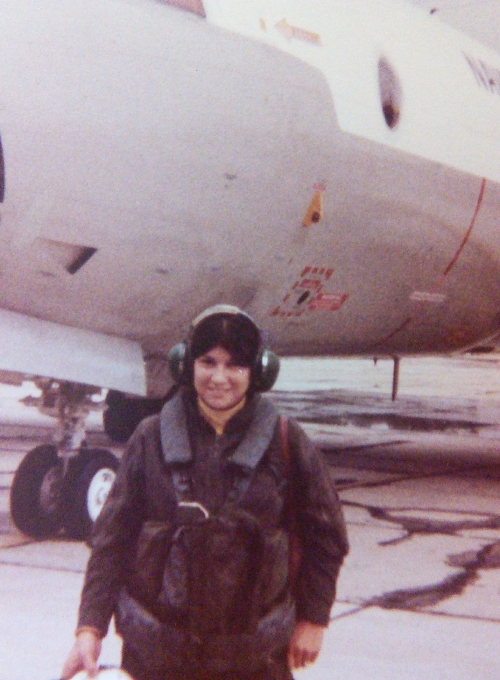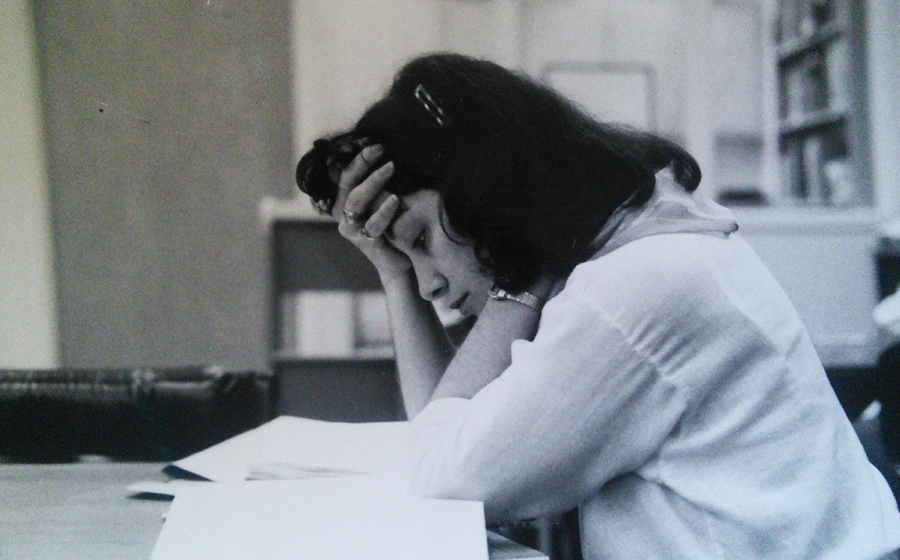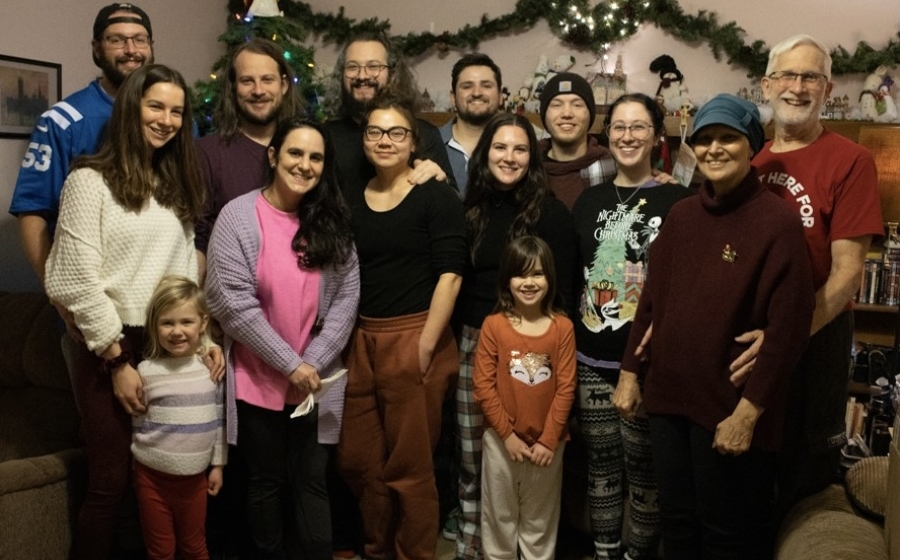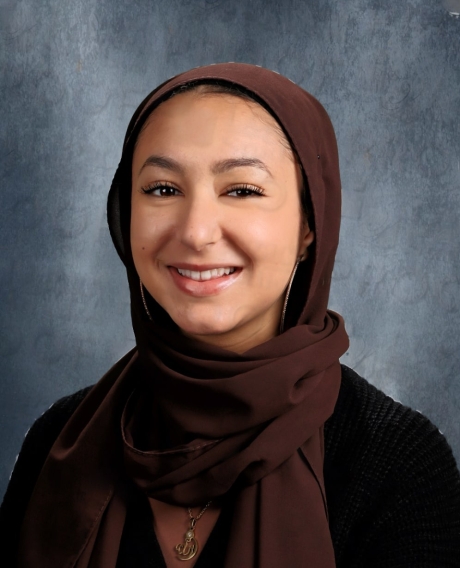
Endowing a Scholarship to Honor a Lifelong Love Affair With Statistics
Growing up in the 1960s on a small tobacco farm tucked along Maryland’s Eastern Shore, Gertrude Huster knew hard work—work that gave her the confidence to dream big.
With a natural affinity for numbers, she soaked up math and science classes. Working through her chores, Huster was a careful observer of farm life—from the chickens and rabbits to the corn and tobacco—examining behavior and growing patterns. Such observations informed her 4-H projects, like one that evaluated tobacco plant growth. Huster’s parents supported their budding scientist and encouraged her determination to pursue a college math degree.
Their support was key in the early 1970s, when the male-dominated fields of science and math seemed untouched by the surging feminist movement and women’s demands for equality. A fierce competitor, Huster knew she belonged in the laboratory. She didn’t flinch when her high school algebra teacher initially spluttered, “But girls can’t do math!” as she steadfastly studied and prepped for the SAT. By the time she needed a letter of recommendation, he had become Huster’s biggest fan.

Budding statistician and naval flight crew trainee, Gertrude Huster, circa 1979.
It was that same math teacher who helped her apply for and earn a scholarship to the Naval Air Test Center program in Patuxent River, Maryland, which partnered with Virginia Tech to enroll promising, low-income female students in STEM and naval training programs. Alternating semesters at Virginia Tech, where she pursued degrees in statistics and mathematics, and the Patuxent River Naval Air Station, where she trained for flight crew duty, Huster not only tackled an aggressive science curriculum but also learned to test airplane radar and sonar systems and swim.
While the scholarship literally set Huster on a flight path to a college degree, a naval career was not on her radar—nor was biostatistics, for that matter. But Huster’s curiosity led the way.
First, a college course in cultural geography introduced her to the field of epidemiology. Then, when she took a leave of absence from school for treatment of toxoplasmosis-induced blindness at the Wilmer Eye Institute, it was only natural for Huster to ask about the big building across the street—the Bloomberg School of Public Health.
As she underwent treatment and regained her sight, Huster sought out information about the role statistics play in public health. Excited about the possibilities of post-graduate study, she returned to Virginia Tech to complete her Bachelor of Science and prepare her applications.

A dedicated biostatistics student, Huster also worked as a department teaching assistant, circa 1984.
During the Bloomberg School application and interview process, she met several Biostatistics faculty members, impressing Department chair Chuck Rohde and Professor Scott Zeger with her aptitude. When Huster received an acceptance letter—accompanied by a tuition scholarship—she told Rohde she simply couldn’t afford to live in Baltimore. Unwilling to lose the promising candidate, he and Zeger pulled together funding for a teaching assistant position and stipend. Once again, financial support made the difference.
Huster embraced biostatistics, eventually working with Zeger, who became a lifelong friend and mentor. He fondly remembers her and Biostatistics doctoral student Bill Huster, PhD ’85, during their years at the School as well as attending the couple’s wedding. Held at a VFW in the middle of tobacco farm country nearly forty years ago, Zeger can still feel Huster’s father’s strong handshake, which evinced the hard work of farm life. “Gertrude brought a bit of rural Southern Maryland to the Department of Biostatistics and Baltimore,” Zeger writes. “Her joy for life and her loving partnership with Bill were apparent every day. BSPH can feel proud of having attracted them both to the Department.”
Huster went on to build a rewarding research career and a full life with Bill. Work in gastroenterology and epidemiology at the University of Alabama at Birmingham was followed by a move to the University of Cincinnati, where she carried out cardiovascular and stroke research. Later, she researched pediatric epilepsy at Indiana University with Distinguished Professor Emerita Joan Austin and served as a biostatistical liaison and mentor to master’s statistics students. In addition to their busy professional lives, the Husters raised five children together. A full life indeed.

Bill and Gertrude (far right) gathered for the holidays with their extended family in December 2022.
Diagnosed in 2019 with triple-negative breast cancer, it was Huster’s scientific acumen that helped her fight the disease for four years. She researched clinical trials and shared the findings with her oncology team. Ever the careful observer, she created a blog documenting her cancer journey, including a full timeline from diagnosis to treatment outcomes, in the hope that her experience would help other patients.
When all treatment options were exhausted, Huster reflected on her life in letters to her family. She shared her story, remembering the people who had supported her along the way. “I spent my career in a male-dominated, STEM-related field,” she wrote, “and the advice I would give, especially for girls, is to seek out strong mentors and to not be afraid to stand up for something you believe in.”
With a deep appreciation for the ways her personal success was built on others’ generosity, Huster and her family endowed a scholarship in the Department of Biostatistics, just before she passed away in June 2023.

Biostatistics student Nora Elhaissouni is the first Huster Scholarship recipient.
Huster would likely have been delighted to meet the first Huster Scholarship recipient, Nora Elhaissouni, who started her master’s program at the School this fall. Elhaissouni writes, "As a first-generation and low-income student, pursuing a master’s degree felt out of reach. With Gertrude's support and generosity, I have learned so much just during my first term and am excited to keep learning more.” She is eager to use her passion for data to address research disparities in infectious disease and maternal and child health, and looks forward to helping others access career opportunities, just as Gertrude did.
As a young girl working through her chores on her family’s Chesapeake Bay farm, Gertrude Huster dreamt about how she could use science and math to help others. Scholarship and funding support turned her dreams into reality, creating personal and professional opportunities that didn’t seem possible. In paying that generosity forward, Gertrude and her family will help other dreamers find their own flight paths to achievement.
Suzanne Flinchbaugh is a writer in the Office of External Affairs at the Bloomberg School. For more information about the Department of Biostatistics, please contact Quentin Davis, associate director of development, at qdavis6@jhu.edu.
